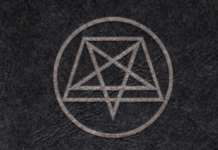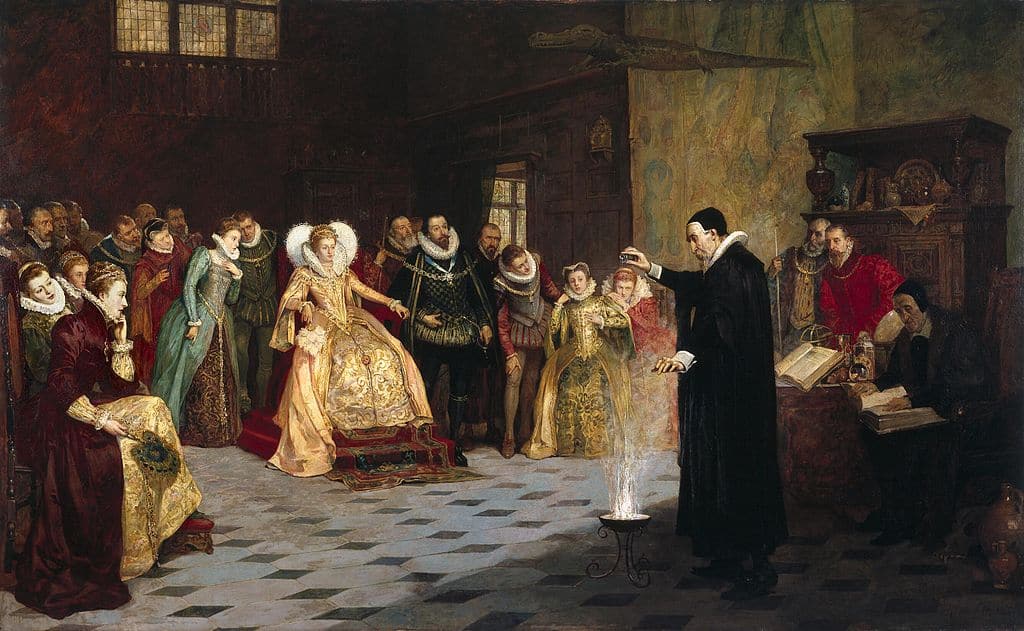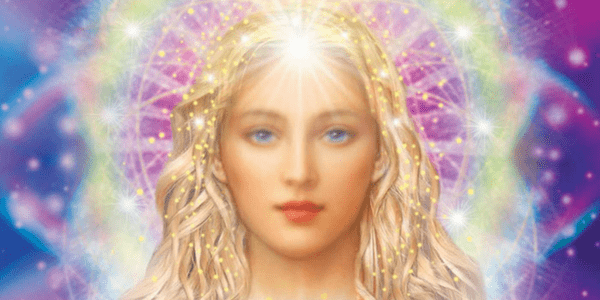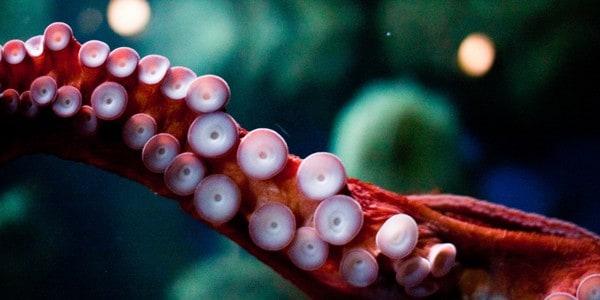 Every morning I wake up and stretch limbs that aren’t physically there. I decide whether to classify last night’s dream as a past life memory or a precognition, and muse a little over being reborn into a new day. My tentacles writhe around me as I go about my morning routine: coffee, shower, breakfast, so on. I dress myself to emulate these sensations; scarves, flowing skirts, dangling jewelry, things that move when I move. Looking at me, you can probably tell I’m a Pagan and an artist, but I’m an alien too.
Every morning I wake up and stretch limbs that aren’t physically there. I decide whether to classify last night’s dream as a past life memory or a precognition, and muse a little over being reborn into a new day. My tentacles writhe around me as I go about my morning routine: coffee, shower, breakfast, so on. I dress myself to emulate these sensations; scarves, flowing skirts, dangling jewelry, things that move when I move. Looking at me, you can probably tell I’m a Pagan and an artist, but I’m an alien too.
Otherkin are people who, for whatever reason, consider themselves to be “not of this world” or non-human in some way. For some, it’s a spiritual belief. For others, it’s about metaphor and personal narrative.
This article from Vice1 floated across my screen one day, and it was the last straw. It wasn’t a terrible article; as far as articles about otherkin go, it was quite good. The author spoke to actual kin and was genuinely trying to educate themselves, but something just seemed off. There are some small oversights and factual errors, but I think what was lacking was an insider’s perspective. I’ve addressed being otherkin in my writing ((See also “Blood is life: The Vampire’s Masquerade Ball.”)) for Spiral Nature in the past, so I thought I would take the time to focus on it specifically. I speak here from my research, memories, and experiences with the otherkin community with the hope of bringing some understanding to an often misunderstood experience.
History
The otherkin subculture as it exists today got its start in the early 1970s.2 One of my issues with the Vice article is that it says the kin community has been growing “since 2012” with no mention of our longer history. J. R. R. Tolkien’s The Lord of the Rings trilogy is generally considered the catalyst for otherkin culture. After it became a countercultural symbol in the ’60s, people who felt they were elves began finding each other, largely within art and spirituality circles. Although records are spotty, I am almost certain that other kin were gathering at this time as well. (We seem to have an intuitive sense for each other.)
In the ’90s mailing lists became a popular means for elves to communicate, the most notable being the Elfinkind Digest, which is still running. This is also the origin of the word otherkin; elfkind was in common use in elf circles, and they began using otherkind to describe the increasing number of non-elf subscribers, which evolved into otherkin as a term for non-humans as a whole. The first therians (a subset of otherkin who identify with earth animals and werebeasts) came together on the Alt.horror.werewolves newsgroup around this time as well. It started as a place to discuss werewolves in horror fiction, but over time many people who felt a connection to werewolves and other animals joined, and much of otherkin and therian culture got its start there. They organized some of the first offline otherkin meets, which they called “howls.” The word “howls” is still used by some therians, but kin as a whole prefer “gathers.” Unfortunately, it was overrun by (Internet) trolls and disbanded around 1999.3 At this point, otherkin had small places in furry, Pagan, and goth communities. (Not surprisingly, vampires are their own distinct subculture sometimes associated with otherkin.) Otherkin began finding each other and creating dedicated otherkin spaces, largely as newsgroups, and then message forums, and eventually on social media sites.
In 2007, Lupa’s Field Guide To Otherkin4 was published. Though some previous works discussed specific kintypes (that is, the specific thing an otherkin identifies as, such as an elf, wolf, faery, etc.) or mentioned otherkin in the context of other groups, this was the first work to focus on otherkin as a whole. It’s somewhat dated now, since online communities evolve quickly, but it’s a very helpful and accurate overview of what otherkin are and I wholeheartedly recommend this book if you can find a copy. (The author no longer identifies as otherkin5 and has taken it out of print, so physical copies are expensive and trustworthy PDFs are tricky to find.)
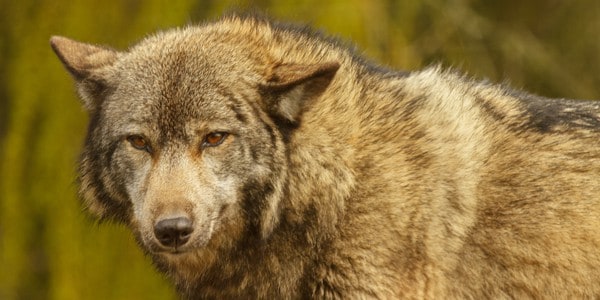
Sense of self
In terms of how we conceptualize ourselves, otherkin fall into two main categories. Spiritual kin, who are the majority in most communities, see their condition as spiritual. They often believe in reincarnation and have memories of past lives as their kintype(s). Many consider their souls fundamentally non-human. Psychological kin view their identities as mental constructs, whether they’re coping mechanisms or tools for personal development.
A lot of kin, myself included, fall into a middle ground. I remember many of my lives, and my identity and purpose has carried through them, so I consider my identity fundamentally spiritual. At the same time, I believe strongly in the power of symbolism and metaphor, and in the power of a well-constructed narrative. I don’t doubt my memories, partly because I’ve encountered people with kintypes and memories shockingly similar to mine, but if this all turned out to be a creation of my subconscious I wouldn’t consider it any less valid.
Awakening
Though there are some otherkin who understand what they are their entire lives, most go through a process of gradual realization known as awakening. Most kin have some vague sense of being different from a young age, but the awakening itself usually happens somewhere from the onset of puberty to early adulthood (but it can and does occur at any age). This can happen in many ways: people who experience astral limbs (feeling the sensation of body parts that aren’t physically there, such as horns, wings, tails, or in my case, tentacles) feel them for the first time, past lives can begin surfacing, and mental shifts (changes in mindset that I’ll cover more later) can become more prominent. Eventually, they realize that, in some way or another, they are not human.
I myself awakened in the winter of 2013. What I am is difficult to describe — the words cosmic horror, lovecraftian, shapeshifter, and psychopomp come to mind — but I usually default to alien in conversation. I had always felt a pull towards ideas of death and rebirth, chaos and change, strangeness and madness, and felt an odd sort of kinship with cosmic horrors (such as H.P. Lovecraft’s Old Ones) and felt that they should be approached in an open rather than fearful way. I was in my thesis year at art school, which is more or less an atmosphere of forced introversion. After some odd dreams and random flashes of memory I decided to do some energy work to see what this was. That’s when I felt my tentacles for the first time. I realized I didn’t just like aliens, I am one.
For many kin, this is a happy time: when things start coming together and making sense and they find a community they feel they belong in. This can also be a time of pain. Those who remember past lives often recall emotionally charged times first, and that can mean unpleasant and traumatic memories emerging during an already confusing time. Many kin feel homesick for their places of origin, and some feel that, in some insidious way, they have forgotten who they really are and must recover that knowledge. Those who have read or seen The Last Unicorn might recall how the unicorn began losing her memories after being transformed into a human. This is a very apt way to describe this feeling. Others wonder how they can live in a way that’s true to themselves, and worry about being rejected by friends and family.

Shifting
Some otherkin, myself included, feel their kin-ness in a constant, steady way, while others experience shifting. Shifts, as they’re called, can be voluntary or spontaneous, and are different depending on the individual. They might feel their astral limbs more prominently, alter their body language, or feel their non-human instincts more intensely. A great deal of distinction is made between mental and physical shifting. Most otherkin do not believe in physical shifting, and those who claim to have physically changed are either assumed to have some undiagnosed illness (I remember a mermaid whose “shifting” turned out to be chilblains brought on by swimming in a cold ocean) or to be trolls. Internet trolls, that is, not trollkin.
Hostility
I’m going to be blunt here: there are a lot of people who don’t like otherkin for various reasons. A lot of this dislike is rooted in ableism; disliking otherkin isn’t inherently ableist, but a lot of hostility towards us comes from the perception that we must be mentally ill or delusional to believe what we do. A lot of kin are openly neurodivergent as well, and this is used to invalidate their experiences. I actually spoke to my therapist about this, and they confirmed what kin have been saying for years: non-traditional spiritual beliefs and mental constructs are not delusions, and people who say they are don’t know what they’re talking about.
Otherkin come into conflict with the trans community as well, which is interesting to me since a lot of kin are also trans (and the otherkin community has an especially high number of non-binary folks). Opinions and reactions range from confusion to shrugging acceptance, to people who believe that otherkin are deliberately appropriating and invalidating the experiences of trans people. This is mostly the result of inaccurate information being spread. Otherkin are a favourite with Internet trolls, mostly with the justification that they want to show how ridiculous otherkin really are, and how much harm they do to trans and social justice communities, and it’s interesting that they have to antagonize people and spread misinformation to do that. They make fake blogs, posing as, say a “transethnic pizzakin,” then make posts spreading misinformation, such as conflating being otherkin and trans, or spreading inaccurate Pagan practices, or mocking mentally ill people (really, these blogs are terrible to everyone). And then these troll blogs are used by bigots to invalidate trans people, which creates backlash against otherkin, which causes kin communities to become hostile and defensive, and so on in a vicious, vicious circle.
I think part of the problem is that, since otherkin aren’t well-known outside of certain internet circles, people don’t know what an actual otherkin looks like or how to identify a troll. So here’s a quick guide: If someone is saying that being otherkin and being trans are the same thing, or that otherkin are oppressed, or that things they are kin with should be treated like humans (ex: a dogkin saying that having dogs as pets is cultural appropriation or slavery) than this person is a troll. Actual kin tend to be insular and avoid conflict with other communities. And we know we’re not oppressed. Really, we do.
That said, many otherkin do experience dissatisfaction with their human bodies, and many who are also trans experience these two things in a similar way, and I think they should be able to talk about their experiences in a way that makes sense to them. I’m referring here to the controversy over some otherkin using the word “dysphoria” when talking about disliking their human bodies. My feeling is that trans kin can and should use it if it makes sense to them, but cis kin could probably find another word more accurate to their experience. And there are a lot of similarities between the hostility I’ve experienced for being otherkin and for being non-binary, most of which boils down to respectability politics; the idea that my identity isn’t “real” and people like me make it hard for people with “real” issues to be taken seriously.
Community
At this point, you’re probably wondering what it is otherkin do in their guarded communities. And yes, “guarded” is accurate; most forums require you to register before you can see what’s posted and have strict anti-troll measures as well. A lot of it is what all online communities do; we talk about our lives, we make jokes, and we mess around. We spend a lot of time sharing our past lives and comparing notes, as well as teaching past life and dream recall techniques to each other. Tarot and energy readings are common as well. There’s a lot of conversation about religion and mythology, but we share books, games, music, and films just as much. The line between mythology and modern fiction is blurry at at best, and otherkin as a whole seem to understand that.
We also share ways to help each other feel more comfortable living as humans on earth. This can be simple things like decorating tricks and finding clothes,6 or more abstract, like discussions of how to compromise non-human instincts and desires with the reality and expectations of human life. We also roleplay a lot (though many otherkin communities have strict rules about when and where roleplaying is allowed) both for fun and to explore different aspects of our identities.
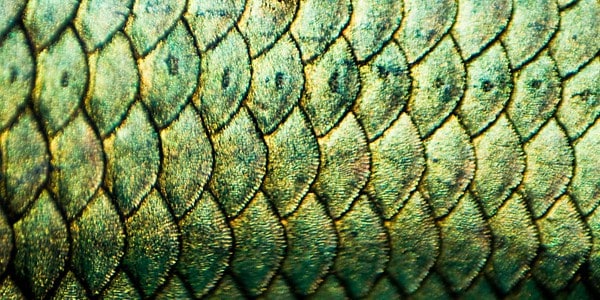
Common kintypes
Perhaps it would be helpful to break down the community by kintype. The kintypes I’ve seen the most are elves, fae, therians, dragons, angels, demons, and fictional characters. But I’ve seen some very unusual ones as well; you can encounter nearly anything on an otherkin board. There are some definite trends among kintypes (such as aliens and fictionkin being drawn to psychological explanations for their beliefs and kin from specific mythologies often worshipping that culture’s gods) but on the whole otherkin are an individualistic bunch, so it’s hard to make any generalizations. The best thing for a newcomer to do is talk to as many people as they can. Even though beliefs differ dramatically, kin seem to have a sense for their own kind.
I think that about covers it in terms what you need to know. Since this is an important topic to me there’s more to come. I plan on writing a follow-up piece to this one, specifically about how to create a cohesive spiritual practice as an otherkin or other ambiguously human person.
And I want to take a moment to encourage people to ask questions in the comment section, whether you feel you might be kin or if you’re just curious. (I also get that this can be personal, so if you need to you can email me, and I can answer you privately or post an anonymous answer here.) I hope I’ve given you a better understanding of what otherkin are, and I hope that something here has helped you understand yourself as well.
Otherkin communities
The Otherkin Community
Castle Otherkin
Image credits: dgies, Richard Clark, Khairul Nizam, and Chantal Wagner Kornin
- Amber Roberts, “Otherkin Are People Too, They Just Identify as Nonhuman,” Vice. [↩]
- Scribner, O. Otherkin Timeline: The Recent History of Elfin, Fae, and Animal People, 2012. [↩]
- Alt.horror.werewolves, Wikia. [↩]
- See our review of Field Guide To Otherkin. [↩]
- Lupa, “Letting Go of Therianthropy for Good.” [↩]
- Check out Another Otherkin Fashion Blog and Come Home for tips for otherkin decorating and fashion. [↩]


